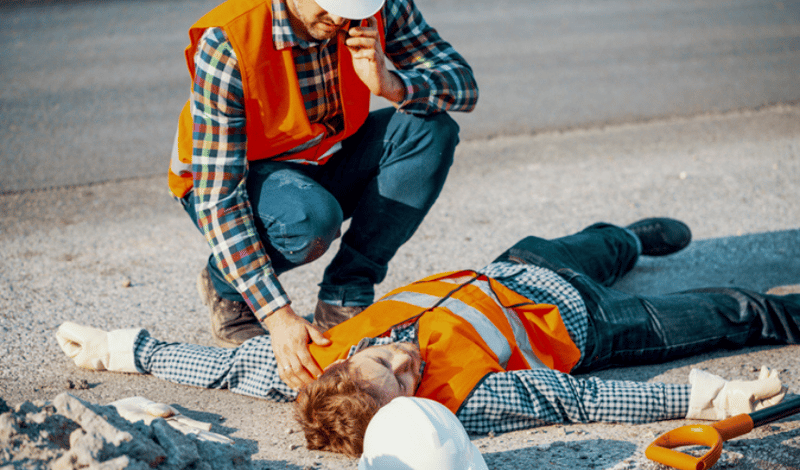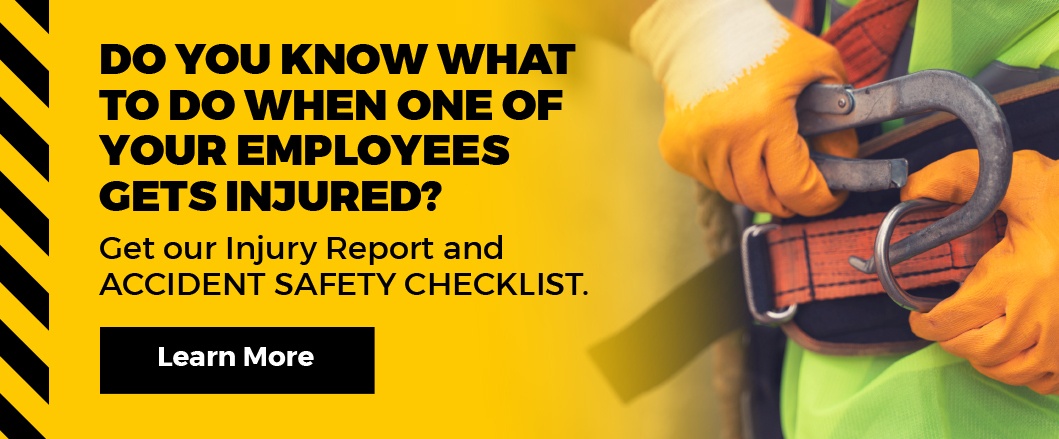
When a construction accident happens, it can seem like time stops. However, this is anything but true. Time is of the essence when dealing with any unforeseen event that endangers workers, derails your project, or incurs costly repairs.
If an employee is injured in an accident, you don't want to miss anything important as you address their needs. Here are the key steps to take when an accident strikes.
Seek Medical Attention
If you witness a construction accident on your job site, the first step you must take is to call for medical attention. If you are alerted to an accident by an employee, ask if they have called authorities for medical help and take immediate action if they have not.
Although accidents can vary in their severity, only a trained medical professional should move an injured worker or tend to their injuries. It is imperative that an injured worker is not moved and does not move themselves if a back injury is suspected.
Once the scene of the accident is secured, you will need to take the next step of gathering information for your report.
Report the Accident
Medical professionals are on the way, and any injuries have been assessed -- now, it is critical to report the incident internally, per your company's guidelines. This may vary depending on your company's policies. Know these as well as your state’s regulations. Many states require that you report your accident within a certain time period.
Following these reporting requirements not only prioritizes the safety and wellbeing of your team, but protects the reputation of your company as well. Always put your report in writing and keep a dated copy for your own records. Be as specific as possible when documenting the conditions that led to the accident, remediation, and outcomes. After you have informed relevant authorities and those at your company, you will need to begin preparing a formal written report with more in-depth information that you will send to OSHA.
Collect Important Information
If you witnessed the accident yourself, your testimony will be the best way to begin your written report. If you did not witness the accident first hand, try to get to the scene as quickly as you can to inspect conditions. Delegate this to a trusted employee if you are not able to be present on site. The following will be crucial for your report:
- Photographs of the area, any equipment involved, and any injuries sustained. If your company was not at fault and not negligent, these photos will act as proof. If there are any issues documented in these photos, they will be essential as you work to address the issue directly and get your injured worker the compensation that they need.
- Witness information will help piece together a timeline for your report. Talk to any witnesses and collect their names and first-hand accounts. Memory can be imprecise, so the quicker you are able to do this after the area is secure, the better.
- Any other relevant factors, such as weather conditions and precipitating events should be noted as well.
Thoroughly documenting all of this information will make your next step easier.
Create a written report
OSHA requires employers to report any worker fatality within 8 hours and any incident that results in amputation, loss of an eye, loss of consciousness, or hospitalization of a worker within 24 hours. This report should be written and submitted based off of your state’s guidelines, so be sure to craft it with those in mind. Provide as much detail as possible.
Your report should construct a timeline of events leading up to the accident, and list all possible causes. It should include all information that you are aware of from the witness reports, photographs, and fact gathering you conducted on site.
Related Content: When Should a General Contractor Hire a Safety Consultant?
Develop and Implement a Corrective Action Plan
Just as you should be specific when documenting an accident, you should be specific and targeted when creating an action plan to address the issue. A corrective action plan needs to directly address the key safety issue that resulted in the accident. It should contain specific steps and procedures that have measurable outcomes, and justifications for why they are needed.
Perhaps most importantly, a corrective action plan should be implemented and communicated to employees within a tight deadline to prevent future accidents. Everyone should understand how their responsibilities and routines change after it is implemented.
Follow Up and Make Adjustments
Once a plan is implemented, keep tabs on it and revise it as needed. A corrective action plan should be flexible, though any changes should be clearly communicated to avoid confusion. Don’t let safety issues go unchecked, under any circumstances. If other concerns become apparent as you investigate, consider a safety audit to address issues on a larger scale.
The best time to address an accident is before it happens. But when things do go wrong, your response, corrective action, and follow-through will be vitally important as you work to keep your employees safe and your site on track.


















